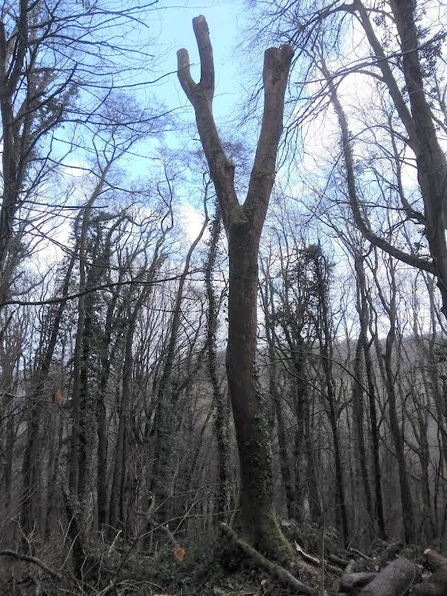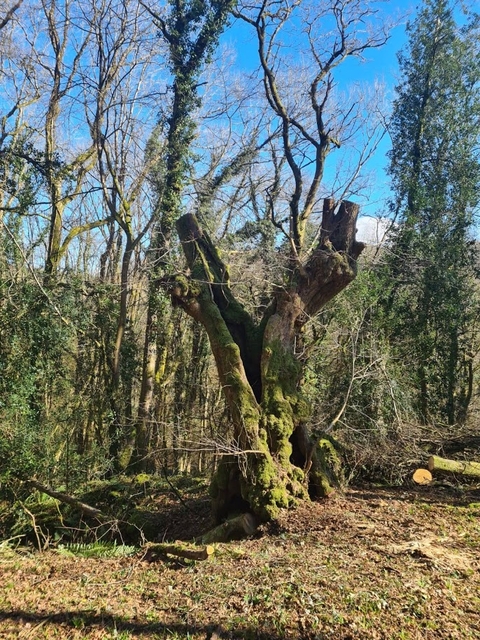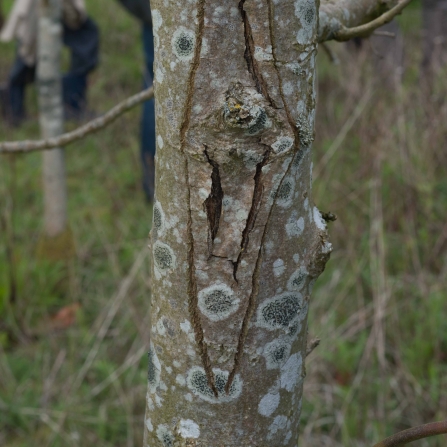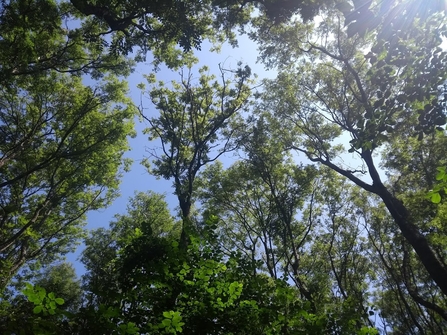Gwent Wildlife Trust reserves staff and contractors have been incredibly busy over the autumn and winter, making safe Ash trees highlighted as dangerous, due to being infected with Ash Dieback.
Most of this work is at Ash dominated reserves including Dan-y-graig, Croes Robert, Piercefield Woods and Prisk Wood .
Having to cut down so many of these Ash trees over such a short period of time, and down to ground level, isn’t what we would have planned for from a wildlife conservation perspective. However, our reserves staff have attempted to balance the danger (from branches and trees falling onto visitors, vehicles and buildings) with conservation by leaving as many as possible as standing pieces of deadwood, which are safer for visitors and great for wildlife.





